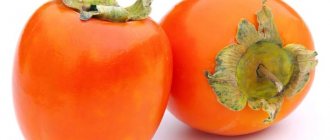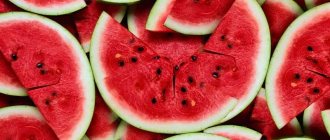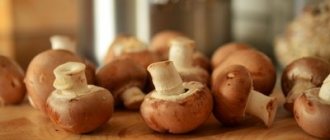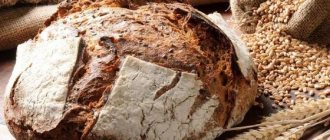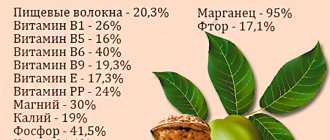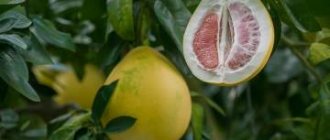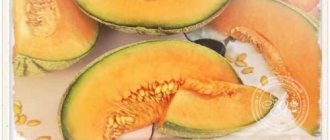Potatoes are one of the many products that, thanks to the efforts of overly zealous nutritionists, have been blacklisted.
For a long time, any diet meant a complete exclusion of potato dishes from the diet. This was primarily due to the high glycemic index of this vegetable.
Today, renowned nutritionists have rehabilitated this root vegetable.
Moreover, the phrase “lose weight by eating potatoes” no longer belongs to the realm of science fiction. The main thing is to know how to do it correctly.
Characteristics of potatoes and chemical composition
Potato (Solanum tuberosum) is a perennial herbaceous plant of the nightshade genus (Solanum) of the nightshade family (Solanaceae).
The crop is cultivated as an annual plant. Potato is a bush 600-100 cm high, usually with 4-6, less often with 6-8 stems. Their number depends on the variety and size of planting material. The stems are thick and ribbed. The part immersed in the soil produces lateral processes called stolons. Shoots and tubers form at their ends.
A potato tuber consists of cells filled with starch and covered on the outside with a thin cork tissue. On the surface there are axillary buds or eyes (3-15 pcs.), from which sprouts appear.
One of the buds is the main one and germinates first, the rest are dormant. If the main bud is damaged, the sleeping ones wake up, but weak shoots appear from them.
Reference. Depending on the variety, the shape of the tubers is round, oval, oblong, the peel is pink, yellow, red, purple, the pulp is cream, white, yellow, purple.
Tubers contain a whole range of vitamins and minerals and have high nutritional value. The chemical composition of the product depends on age. Young tubers contain more moisture and vitamins and little starch. Potatoes that have reached technical ripeness contain more starch, vitamins and minerals.
It is difficult to determine the exact amount of certain compounds: the concentration of nutrients depends on the type of soil and fertilizing. As spring approaches, potatoes dry out, vitamins decompose, and the content of the poison, the glycoalkaloid solanine, increases.
The table shows the chemical composition of raw potatoes (100 g).
| Name | Content | Norm |
| Beta carotene | 0.001 mg | 5 mg |
| Vitamin B1 | 0.081 mg | 1.5 mg |
| Vitamin B2 | 0.032 mg | 1.8 mg |
| Vitamin B4 | 12.1 mg | 500 mg |
| Vitamin B5 | 0.295 mg | 5 mg |
| Vitamin B6 | 0.298 mg | 2 mg |
| Vitamin B9 | 15 mcg | 400 mcg |
| Vitamin C | 19.7 mg | 90 mg |
| Vitamin E | 0.01 mg | 15 mg |
| Vitamin K | 2 mcg | 120 mcg |
| Vitamin PP | 1.061 mg | 20 mg |
| Potassium | 425 mg | 2500 mg |
| Calcium | 12 mg | 1000 mg |
| Magnesium | 23 mg | 400 mg |
| Sodium | 6 mg | 1300 mg |
| Phosphorus | 57 mg | 800 mg |
| Iron | 0.81 mg | 18 mg |
| Manganese | 0.153 mg | 2 mg |
| Copper | 110 mcg | 1000 mcg |
| Selenium | 0.4 mcg | 55 mcg |
| Zinc | 0.3 mg | 12 mg |
Glycemic index
Potatoes are classified as foods with an average glycemic index (GI), which depends on the type of cooking:
- raw - 50-60 units;
- boiled “in its uniform” - 65 units;
- boiled without peel - 70 units;
- baked - 60-65 units;
- puree - 85-90 units;
- fried - 111 units;
- chips - 80-95 units.
Calorie content and glycemic index of potatoes
The calorie content of a raw vegetable is 80 kcal. Carbohydrates are the leader here - they account for 18.1 g per 100 g of product. As for proteins, there are 2 grams of them, 0.4 grams of fat.
And now on the glycemic index. I will not deny that potatoes have a really high GI level. You can see this for yourself by carefully studying the table below, where this indicator is indicated.
| "> steamed potatoes | «> 80,2 | «> 2 | «> 1,4 | «> 19,78 |
| "> in uniform | «> 78 | «> 2,7 | «> 0,1 | «> 15,4 |
| "> puree with milk | «> 90 | «> 5 | «> 2 | «> 14,1 |
| "> stewed with meat (turkey) | «> 80 | «> 6 | «> 2 | «> 9,7 |
| "> fried potatoes | «> 192 | «> 2,8 | «> 9,5 | «> 23,4 |
| "> fries | «> 340 | «> 5 | «> 17 | «> 42 |
| ">chips | «> 487 | «> 4,6 | «> 28,5 | «> 52 |
| baked potato | 95 |
| Instant mashed potatoes | 90 |
| Chips and fries | 80 |
| Boiled | 70 |
| Potatoes boiled in their jackets | 65 |
However, there are other factors besides the glycemic index that determine how the body reacts to carbohydrates. These include the glycemic load and combining potatoes with other foods. Let's say you eat a high-glycemic carbohydrate product along with a food rich in fiber, healthy fats, or protein. Then the glycemic response will be lower.
In general, on the Internet you can often see a link to research by American scientists. Allegedly, in a dietary experiment, subjects ate several root vegetables every day. But at the same time, the subjects did not gain weight, but rather lost weight. I cannot vouch for the reliability of such a study. After all, in America the common potatoes are not the same as ours. They mainly eat sweet potatoes with a glycemic index of 50 and a high content of coarse fiber.
Of course, a couple of these potatoes won’t make you want to eat them for a long time. I have already experienced this myself. When we were recently in Thailand, I bought sweet potatoes at the market. I cooked it, added fresh vegetables and a little butter. The feeling of fullness from such a meal did not go away for a long time. But we don’t grow that kind of stuff, so let’s go back to the usual potatoes.

